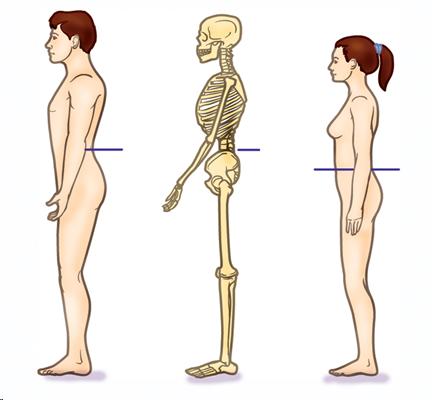
Waist Circumference Measure

So another way to access risk is by measuring someone's waist circumference. And here we're trying to get at where your fat is distributed. This again, just like BMI, is a very simple measurement, and it really measures subcutaneous fat, or fat that's right under the surface of the skin. But this subcutaneous fat correlates very well to the amount of visceral fat that you have. So although we're not directly measuring visceral fat here, the kind that's inside around your organs, it is a pretty good-it is associated with how much visceral fat you have when you do this waist circumference measure.
And you can see here in the picture where we would take this measure on a female and a male. And really all you need to do this is a tape measure. Simple and easy. And you can see the risk categories on the slide here. For men having a waist that is greater than 40 inches and for women having a waistline that's greater than 35 inches indicated higher risk of diabetes, hypertension (which is high blood pressure), cardiovascular disease, and other weight-related diseases.